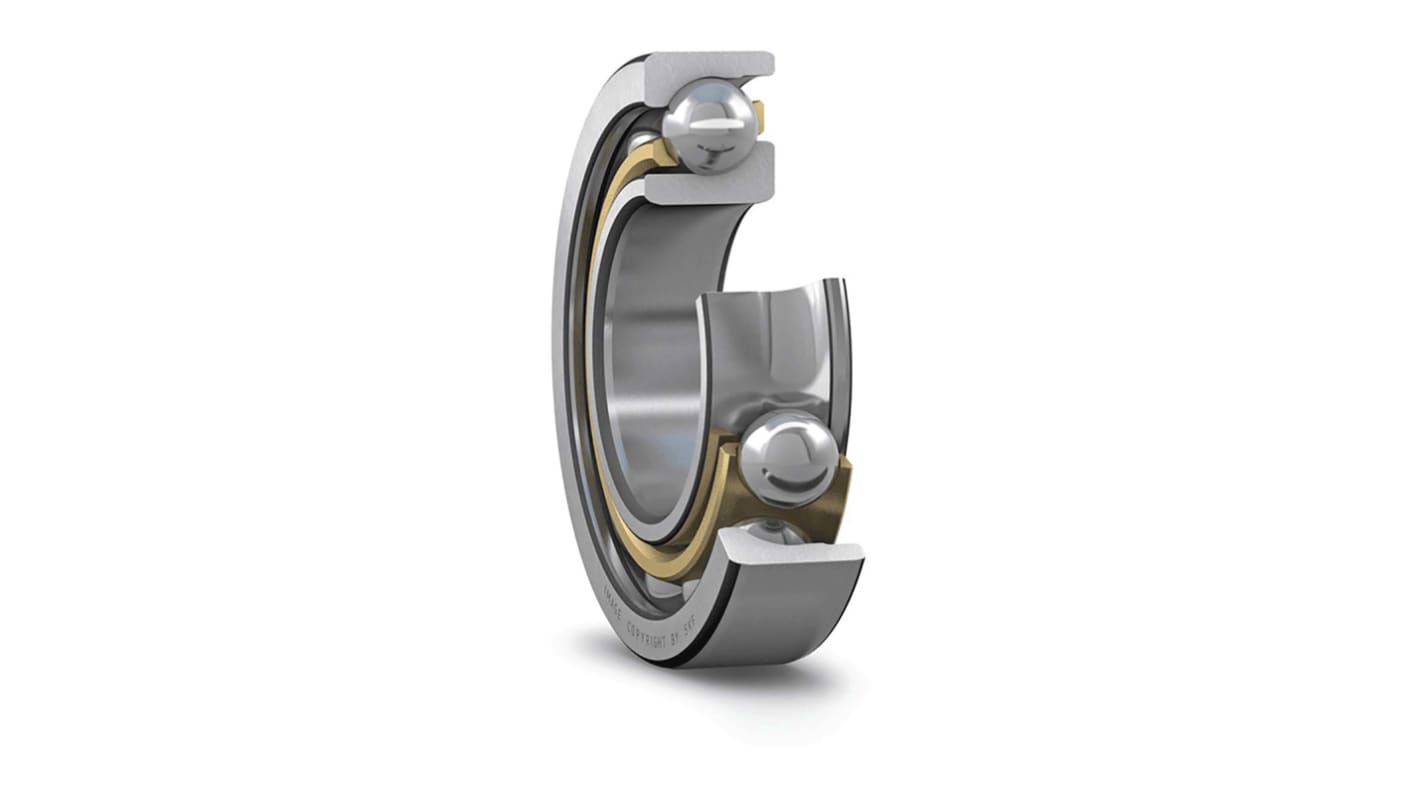SKF 7224 BCBM 1 Row Ball Bearing - 120 mm ID, 215 mm OD 40 mm Race Width
- RS Stock No.:
- 207-5502
- Mfr. Part No.:
- 7224 BCBM
- Brand:
- SKF

Subtotal (1 unit)*
£925.03
(exc. VAT)
£1,110.04
(inc. VAT)
FREE delivery for orders over £50.00
Temporarily out of stock
- Shipping from 02 February 2026
Need more? Click ‘Check delivery dates’ to find extra stock and lead times.
Units | Per unit |
|---|---|
| 1 + | £925.03 |
*price indicative
- RS Stock No.:
- 207-5502
- Mfr. Part No.:
- 7224 BCBM
- Brand:
- SKF
Specifications
Technical Reference
Legislation and Compliance
Product Details
Find similar products by selecting one or more attributes.
Select all | Attribute | Value |
|---|---|---|
| Brand | SKF | |
| Inside Diameter | 120 mm | |
| Product Type | Ball Bearing | |
| Outside Diameter | 215 mm | |
| Race Width | 40mm | |
| Cage Material | Brass | |
| Race Material | Steel | |
| Ball Material | Steel | |
| End Type | Open | |
| Number of Rows | 1 | |
| Static Load Rating | 163kN | |
| Dynamic Load Rating | 165kN | |
| Standards/Approvals | No | |
| Bore Type | Parallel | |
| Limiting Speed | 4000rpm | |
| Bearing Type | Single Row Angular Contact Ball | |
| Select all | ||
|---|---|---|
Brand SKF | ||
Inside Diameter 120 mm | ||
Product Type Ball Bearing | ||
Outside Diameter 215 mm | ||
Race Width 40mm | ||
Cage Material Brass | ||
Race Material Steel | ||
Ball Material Steel | ||
End Type Open | ||
Number of Rows 1 | ||
Static Load Rating 163kN | ||
Dynamic Load Rating 165kN | ||
Standards/Approvals No | ||
Bore Type Parallel | ||
Limiting Speed 4000rpm | ||
Bearing Type Single Row Angular Contact Ball | ||
- COO (Country of Origin):
- DE
SKF Ball Bearing, 120 mm ID, 215 mm OD - 7224 BCBM
Need a ball bearing to accommodate a combined radial and axial load? This reliable single-row angular contact ball bearing from SKF has raceways that are displaced relative to each other in the direction of the bearing axis. As the contact angle increases, so does the axial load-carrying capacity of the bearing. As it's made from steel, this unit is durable and resists corrosion, so it can be used in demanding environments. Bearings of this type are commonly used for material handling and in the wind energy industry.
• Small size for compact applications
• Smooth running properties for rapid acceleration and deceleration
• Standard design for easy mounting
Application Information
• Agricultural equipment
• Food manufacturing
• Electric motors
• Machine tools
• Steel milling
What kind of loads can this type of angular contact bearing support?
Angular contact bearings from SKF are able to support heavy axial loads in one direction as well as moderate radial loads.
Why are angular contact bearings often fitted in pairs?
Angular contacts bearings are usually installed in pairs and adjusted against each other to provide maximum stability. The two bearings can be arranged back-to-back or face-to-face to accommodate axial loads in both directions, or in tandem to accommodate a greater axial load in one direction only.
Related links
- SKF 7224 BGAM 1 Row Angular Contact Ball Bearing - 120 mm ID, 215 mm OD 40 mm Race Width
- SKF QJ 224 N2MA 1 Row Angular Contact Ball Bearing - 120 mm ID, 215 mm OD 40 mm Race Width
- SKF 7324 BCBM 1 Row Ball Bearing - 120 mm ID, 260 mm OD 55 mm Race Width
- SKF 7226 BCBM 1 Row Ball Bearing - 130 mm ID, 230 mm OD 40 mm Race Width
- SKF QJ 320 N2MA 1 Row Ball Bearing - 100 mm ID, 215 mm OD 47 mm Race Width
- SKF 3320 A/C3 2 Row Angular Contact Ball Bearing - 100 mm ID, 215 mm OD 82.6 mm Race Width
- SKF 7320 BECBM 1 Row Ball Bearing - 100 mm ID, 215 mm OD 47 mm Race Width
- FAG 3320-M 2 Row Angular Contact Ball Bearing - 100 mm ID, 215 mm OD 82.6 mm Race Width


